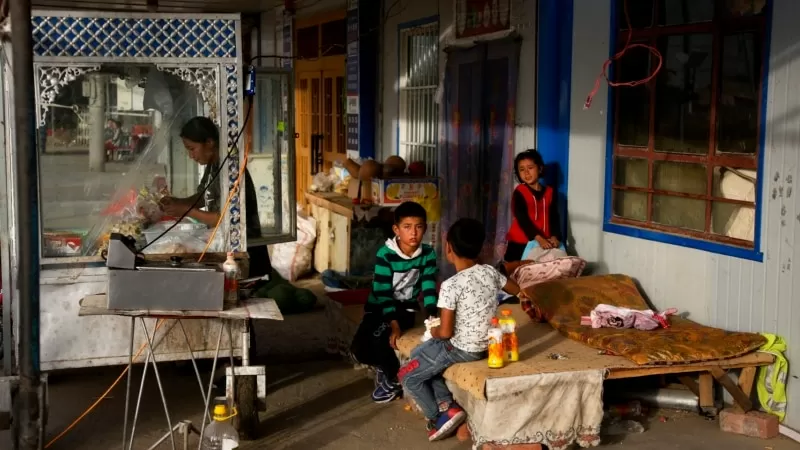Southeast Asia is facing the brunt of U.S. trade curbs targeting the forced labor of Uyghur ethnic minorities in China. Recent U.S. trade figures show that billions of dollars worth of exports from the region have been blocked, as supply chains shift to avoid Chinese products and the dominance of China in key commodities continues.
Economists and human rights experts are calling this a double-edged sword, as Southeast Asia is caught in the middle of these two powerful forces. According to Jayant Menon, a senior fellow at the ISEAS Yusof Ishak Institute in Singapore, the region is facing a difficult situation.
Since the implementation of the Uyghur Forced Labor Prevention Act (UFLPA) in mid-2022, the United States has detained $3.56 billion worth of imports. Shockingly, 86% of these imports, equivalent to over $3 billion, came from Malaysia, Thailand, and Vietnam. Only a small portion, $395 million, originated directly from China.
Under the UFLPA, imports of products made in whole or in part in China’s Xinjiang autonomous region, have been banned due to the presumption that they are made with forced labor. Although some of these shipments are eventually allowed into the United States, the process of proving that they are produced without forced labor can take months, causing a significant burden on importers.
Other than the trade curbs specifically targeting Xinjiang, the United States and other governments have accused China of committing genocide against the Uyghur population for subjecting them to forced labor, mass surveillance, detention, religious persecution, and forced sterilization. However, Beijing has denied all these allegations.
Xinjiang is a major source of crucial commodities in the global supply chain, such as 12% of the world’s aluminum, more than a third of the polysilicon used in solar panels, and 90% of China’s cotton. The Coalition to End Forced Labor in the Uyghur Region, a global network of rights groups, has reported these statistics.
As China’s dominance in these industries continues, supply chains are now shifting to Southeast Asia, not just due to the UFLPA, but also because of the influx of investment in the region. According to Nick Marro, a principal Asia economist and global trade lead analyst for the Economist Intelligence Unit, multinational companies, both Chinese and non-Chinese owned, have been investing in Southeast Asia to evade U.S. tariffs for years.
However, Marro cautions that this may not be a fool-proof strategy, and U.S. trade authorities are vigilant about illegal transshipments and other attempts to circumvent U.S. duties. As a result, tracking the origin of goods, specifically for commodities like cotton, can be challenging. Therefore, Southeast Asia’s role in the global supply chain is now more than just a transit point for Chinese exports.
Jayant Menon, a former lead economist for trade with the Asian Development Bank, has also highlighted this issue. He states that there is now production and value addition in multiple countries, making it challenging to solely focus on goods emanating from Xinjiang to the U.S.
Out of the $3 billion worth of exports detained by the United States from Southeast Asia, the majority have been in the electronics sector, including solar panels. According to Louisa Greve, the global advocacy director for the Uyghur Human Rights Project in Washington, this is due to the massive investment from Chinese solar panel makers into the region over the past decade. Greve also emphasizes that although Uyghurs may not be directly working in the solar industry in Southeast Asia, the polysilicon used in the production of solar panels ultimately comes from China, where forced labor is rampant.
Greve adds that the Southeast Asian countries and companies involved in importing and incorporating Chinese polysilicon into their exported products also risk being complicit in the forced labor of Uyghurs. She urges manufacturers to take responsibility for the raw materials they use, especially since 35% of the world’s polysilicon comes from China.
Menon believes that the UFLPA could potentially benefit low-wage countries in Southeast Asia, which have less of a tainted record when it comes to forced labor, by driving more business their way. However, he acknowledges that the region will struggle to wean itself off Chinese supplies, as China remains the hub and center of ASEAN supply chains.
Although the U


